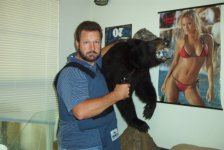We issue Level II concealable vests, and I have a Level IIIA outer vest.....
The IIIA vest is quite miserable to wear most of the year here, it is heavy and hot....however, it does offer considerable protection against blunt force trauma, and the outer carrier makes a great place to hang magazines, radios, gloves, and lots of other crap that I end up needing sometimes....
The Level II vest is much better to wear every day...there is a big jump in comfort level between the two.....
For those of you who were involved in making the stuff, thank you......while I am not a member of the almost 3000 LEO's who have been saved with their armor, some good friends of mine are, and I am glad to have it....and I am glad they are still around

